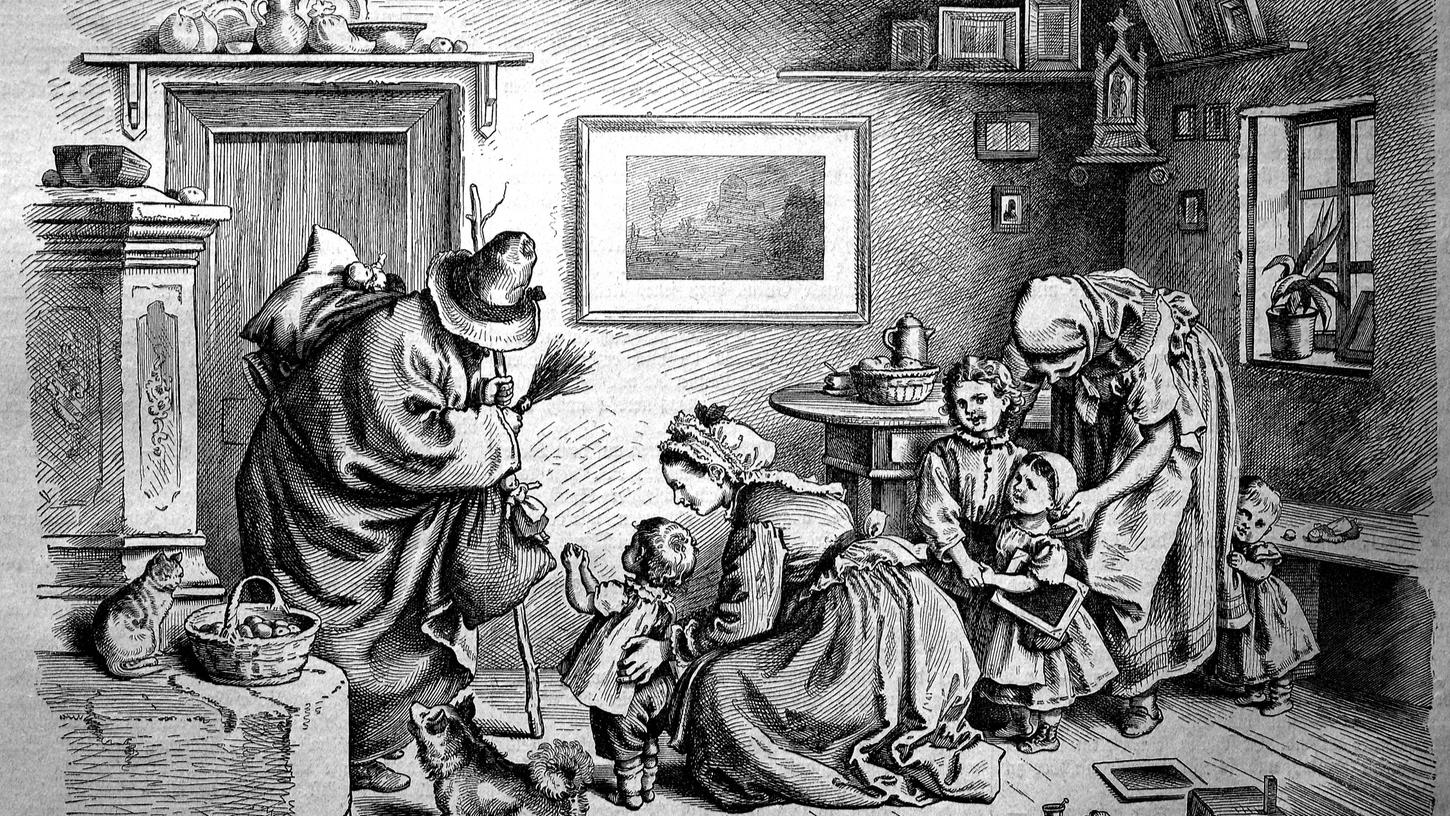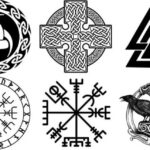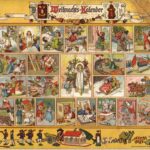
As the Christmas season approaches and Germany dons its festive garb, a figure steeped in mystery and tradition emerges in the collective consciousness of the German people: Knecht Ruprecht. This enigmatic character, often associated with St. Nicholas, plays a pivotal role in the German Christmas traditions. The tale of Knecht Ruprecht is a narrative woven into the fabric of German folklore, reflecting deep-rooted cultural beliefs and practices.
Origins and Historical Significance
Knecht Ruprecht, whose name translates roughly to “Servant Ruprecht,” is believed to have originated in the Middle Ages. His roots can be traced back to Germanic paganism, where he may have been associated with the winter solstice and protective household spirits. With the spread of Christianity, Knecht Ruprecht was adapted into Christian folklore, becoming a companion to St. Nicholas, the patron saint of children.
Knecht Ruprecht and St. Nicholas: A Contrast
Contrary to the benevolent St. Nicholas, who rewards well-behaved children with gifts, Knecht Ruprecht’s role is more ambiguous. He is often depicted as a dark, foreboding figure clad in fur or dark robes, carrying a staff and a sack or a basket. His purpose is to assist St. Nicholas by dealing with the naughty children. According to some traditions, he asks children whether they can pray. If they can, they receive apples, nuts, and gingerbread. If they cannot, they may face his wrath.
Regional Variations
Knecht Ruprecht’s appearance and activities vary considerably across different regions in Germany. In some areas, he is a solitary figure who visits homes alone, while in others, he accompanies St. Nicholas. His portrayal ranges from a horned, devil-like creature in some Alpine traditions to a more benign, fatherly figure in northern Germany.
Knecht Ruprecht in German Folklore
In German folklore, Knecht Ruprecht is a symbol of the harshness of winter as well as its potential for renewal. He embodies the duality of the season – its darkness and the light that follows. Folk songs and poems recount his tales, often highlighting his dual role as both a punisher and a bringer of gifts.
The Modern-Day Knecht Ruprecht
Today, Knecht Ruprecht continues to be celebrated in various parts of Germany, although his image has softened over the years. The focus is less on his punitive role and more on his partnership with St. Nicholas in bringing joy to children. Parades, plays, and other festive events often feature Knecht Ruprecht, attesting to his enduring presence in German Christmas culture.
The Celebration of Knecht Ruprecht Day
Knecht Ruprecht Day is celebrated on December 6th, alongside St. Nicholas Day. It’s a day filled with anticipation for children as they await the visit of St. Nicholas and Knecht Ruprecht. Shoes or boots are left outside the door, a testament to the hope of gifts for the good and a bit of trepidation for the mischievous.
Impact on Other Christmas Traditions
The figure of Knecht Ruprecht has influenced other European Christmas traditions. Characters like Krampus in Austria and the Czech Republic’s Čert are similar to Knecht Ruprecht in their punitive roles during the Christmas season. These figures are part of a broader tradition in European folklore where a companion to the gift-bringer serves as a deterrent to bad behavior.
Controversies and Cultural Sensitivity
The portrayal of Knecht Ruprecht has not been without controversy. In some interpretations, he is seen as a representation of bygone beliefs and practices that do not align with modern sensibilities. Discussions around cultural sensitivity and the evolution of traditions are part of the ongoing discourse about Knecht Ruprecht’s place in contemporary celebrations.
Preserving the Tradition
Efforts to preserve the tradition of Knecht Ruprecht include educational programs, museum exhibits, and cultural events that explain the historical and cultural context of this figure. In preserving Knecht Ruprecht, Germany retains a piece of its rich folklore and traditions, ensuring that the lessons and stories of the past are not forgotten.
Knecht Ruprecht in Literature and Media
Knecht Ruprecht’s story has been captured in various forms of literature and media, from classic poems by Theodor Storm to contemporary children’s books. His character has been a source of inspiration for writers and artists, reflecting the multifaceted nature of the Christmas season and its celebrations.
Knecht Ruprecht is more than just a character in German Christmas folklore; he is a cultural icon that represents the complexity of the human condition. Through him, we see the interplay of light and dark, reward and consequence, and the balance of traditions with the ever-changing cultural landscape. As Germany lights up with Christmas markets and the scent of mulled wine and gingerbread fills the air, Knecht Ruprecht remains a symbol of the season’s deep historical roots and its ongoing evolution.
As we celebrate the festive season, understanding and appreciating figures like Knecht Ruprecht can enrich our experience of Christmas. They remind us that the holidays are a tapestry of stories and traditions, each with its own origin and significance, coming together to create the rich cultural mosaic that we cherish year after year.
By exploring the enigmatic figure of Knecht Ruprecht, we delve into the heart of German Christmas celebrations and gain insight into how ancient traditions adapt and thrive in the modern world. His story is a fascinating chapter in the anthology of Christmas folklore, and his legacy continues to captivate the imagination and kindle the festive spirit.
Related articles:
Forgotten German Christmas Traditions That Deserve a Comeback
Celebrating Christmas in Germany
St. Nicholas Day
German Christmas Traditions
German Fairy Tales: How Brothers Grimm Shaped World Literature
German Superstitions and Folklore







